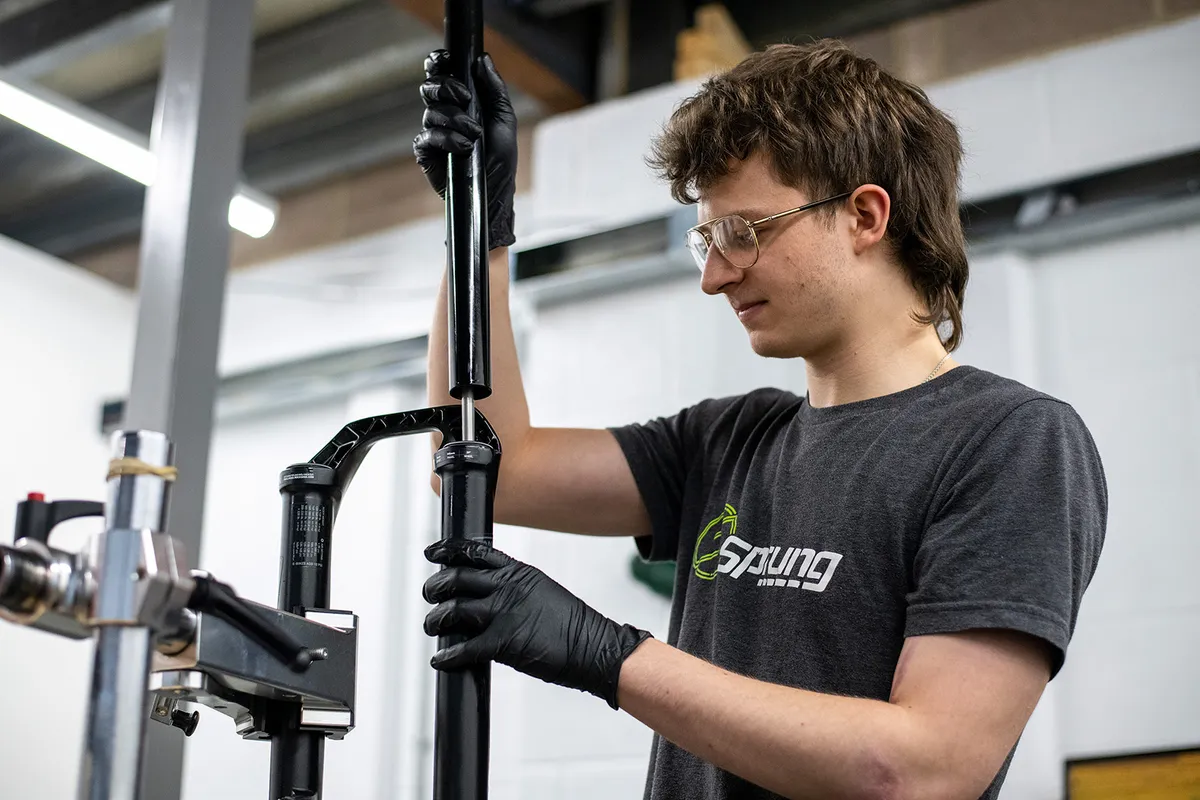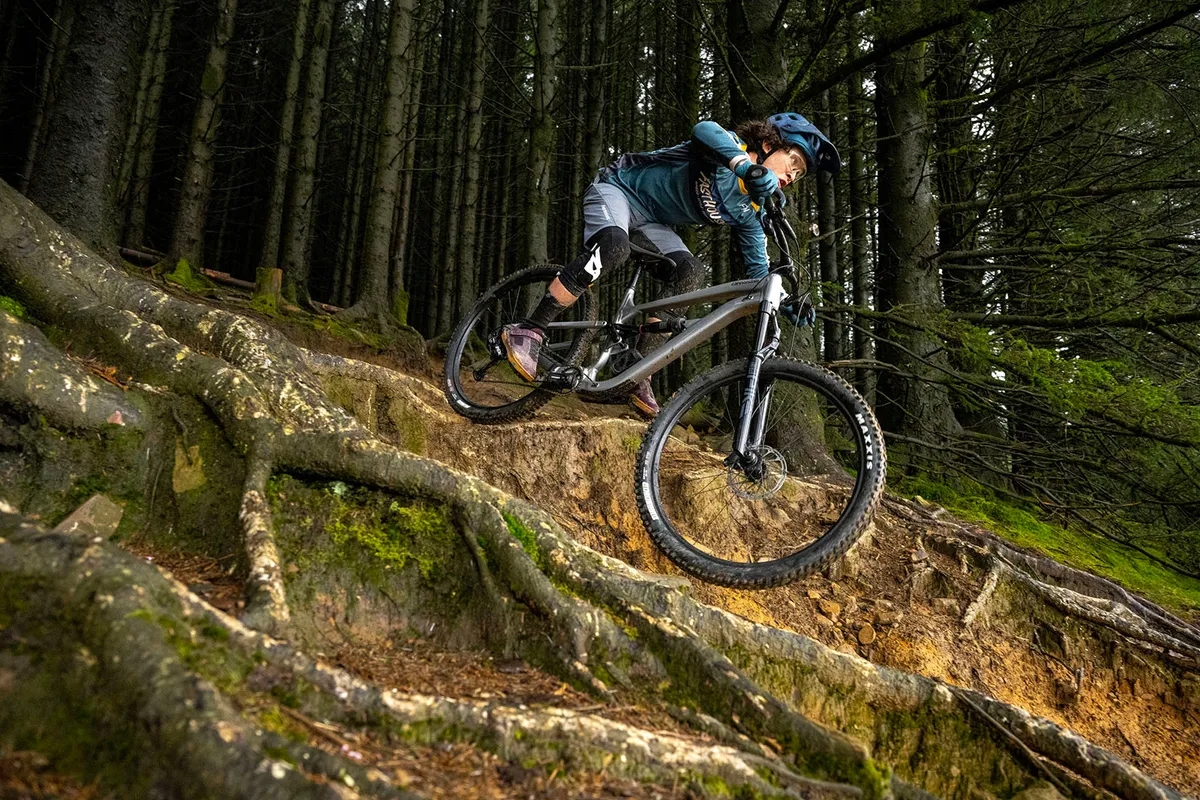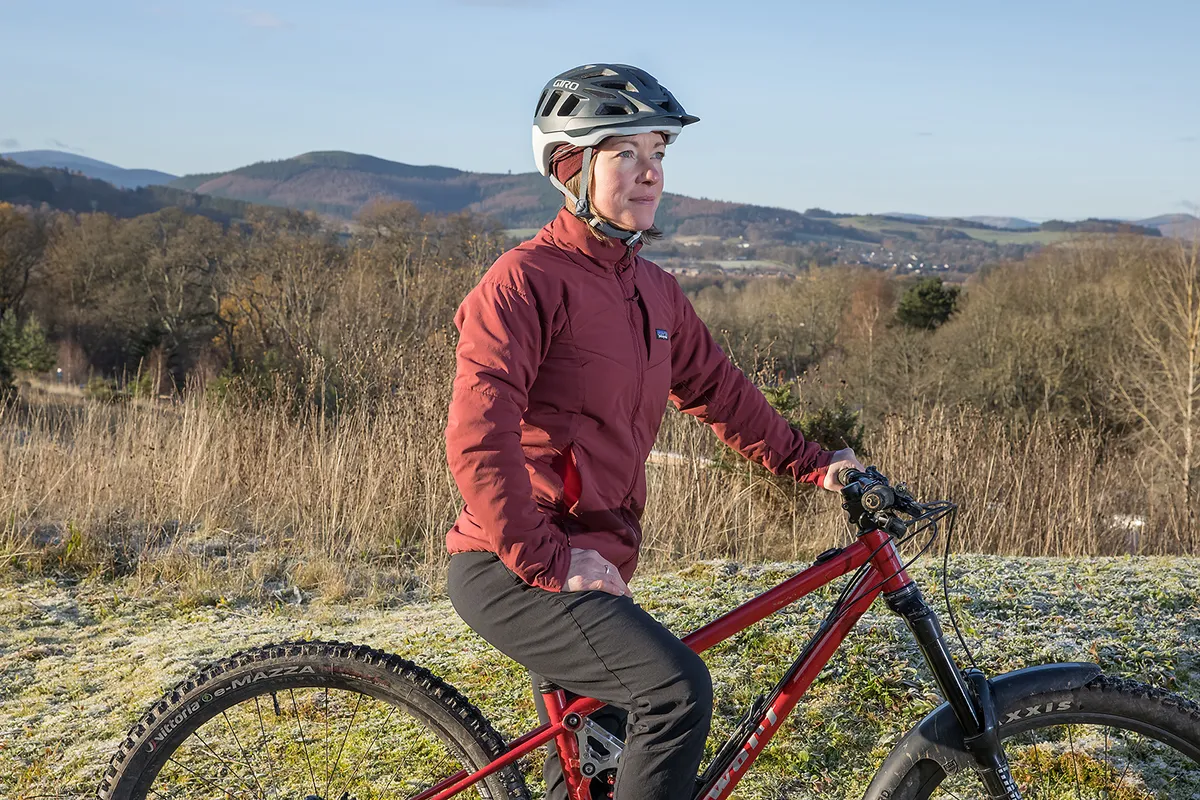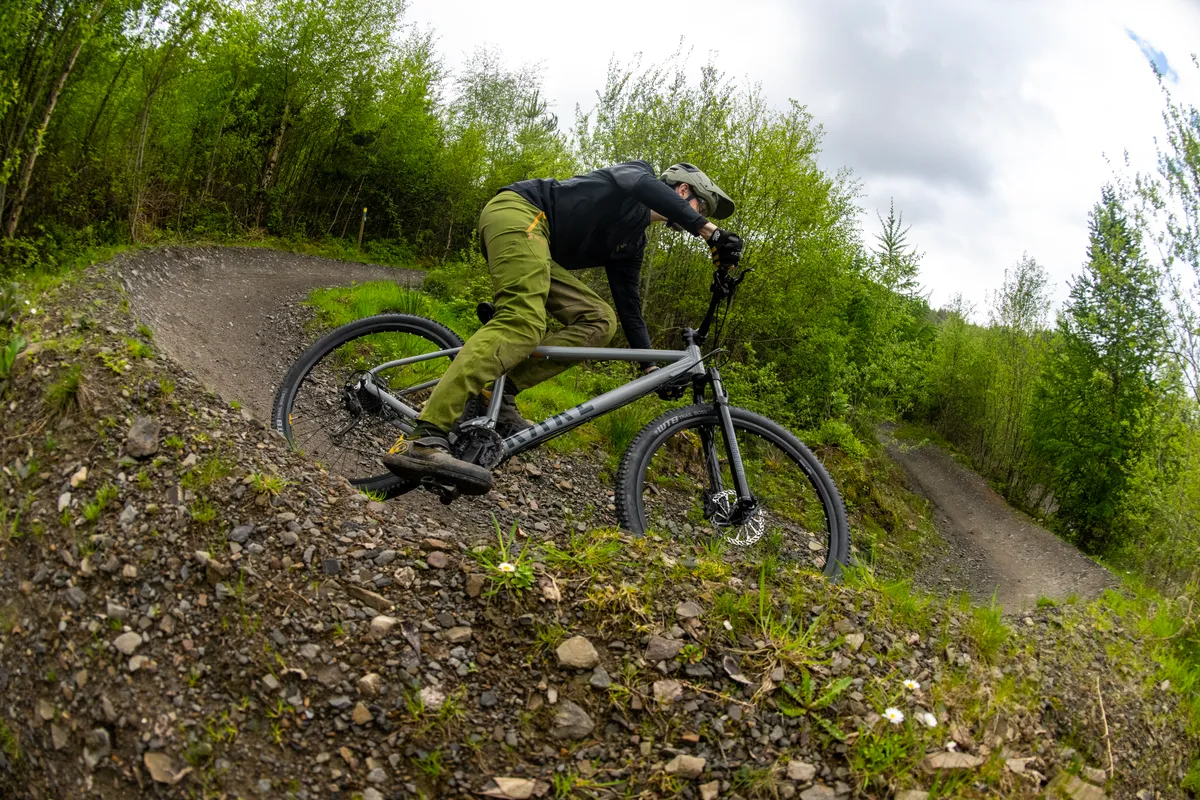On the face of it, getting into mountain biking doesn’t look cheap, but that’s not necessarily true.
While you could spend a near infinite amount of money on mountain biking, from the bike itself to trips to exotic riding destinations, there’s plenty of fun to be found without breaking the bank.
In fact, unlike other sports, the equipment for mountain biking only needs to pose a small barrier to entry. In this article, we’ll take a look at some of the options available to those looking to shralp berms on a budget. We’ll also look at ways to keep costs down in general.
1. Borrow a bike

If you’ve been enticed by the sport, it’s a great idea to test the waters before splashing the cash on your first mountain bike.
Many trail centres will offer a rental fleet of mountain bikes to get you on the trails, experiencing all the sport has to offer without committing to a big purchase.
Most centres will have an array of bikes to choose from, including hardtails for tamer trails and full-suspension rigs for more challenging trails.
It’s also a good opportunity to ask someone who knows the trails about what you can expect, and this will hopefully give you some more pointers on the sport.

If you don’t have any equipment yet, then you can usually borrow helmets, knee pads and other protective gear alongside your bike.
Bike rental usually costs anywhere from £30 to £100, depending on the type of bike you rent, although you can also take advantage of brand demo days.
These are usually cheaper and give you the option of testing one or more bikes back-to-back, which should help you decide on the type of mountain bike you may want to purchase.
If your friends are already into mountain biking, there’s a high chance one of them has multiple bikes, so it’s always worth checking to see if you can borrow one of those.
2. Buy second-hand

While there are some amazing deals on select mountain bikes at the moment, if you’re really strapped for cash, it’s a great idea to buy second-hand.
The second-hand market for mountain bikes is booming, with the inflated prices of the pandemic behind us. In fact, the boom in sales of bikes abandoned by new owners post-pandemic has flooded the market and some serious bargains are available – if you know where to look.
eBay and Facebook Marketplace are two great places to search, with bikes only a couple of years old priced at a fraction of their retail prices.
As with anything second-hand, though, you’ve got to be careful what you’re buying.

Always consider how well the bike has been maintained – it can be particularly expensive to replace components such as suspension – and whether it was originally bought from a reputable source.
You may find an absolute steal, but if the bike is in poor condition, the money you’ve saved may go the way of a bike mechanic to get it functioning properly.
Buying second-hand means you’ve already saved the initial depreciation of a bike, and if done sensibly, it can really lower the cost of getting into the sport.
It’s also a great place to look for clothing and accessories, although we’d always suggest buying mountain bike helmets new so you have more confidence in their protection.
- Read more: The complete guide to buying a used bike
3. Shop in the sales

As mentioned, the bike industry boomed over the pandemic years, with many riders updating their setup to take advantage of the extra time off during furlough or just chasing a newfound fondness for fitness.
This created something of a bubble, with manufacturers expecting the demand to continue.
Alas, the boom didn’t last – bad news for the bike industry, but good news for enthusiasts seeking a deal.
For those now interested in taking up the sport, it has seen prices of bikes tumble, with sales offering up to 40% or more off selected models.
Unlike second-hand bikes, these come with a full warranty and will have little in the way of gremlins.
There are also bargains to pick up on clothing and accessories.
4. Do your own maintenance

Learning how to work on your own bike will help save you money on expensive mechanic fees and teach you the skills to fix your bike should you get stuck out in the wilderness.
While mechanics are great for sorting larger, more complex issues, there’s plenty you could learn to keep costs down.
Think about changing gear cables, bleeding brakes and changing chains, while maybe leaving the suspension to the professionals.
We’ve got plenty of guides on how to fix your bike, so be sure to check them out.
5. Use non-specific mountain bike kit

Reaching for the price tag in a bike shop can raise the blood pressure of even a veteran rider, with what appear to be normal outdoor clothes being sold at a niche premium.
While these products have their place, you don’t need the latest head-to-toe gear to hit the trails.
For instance, take riding shoes. The soles found on mountain bike shoes offer supreme grip on the pedals, but for those just starting, a pair of skate shoes is usually more than adequate.
The same can be said for waterproofs, jerseys and trousers. The MTB-specific gear will feature a cut or style that works better on the bike, such as a lower hem on shirts and jackets to compensate for an arched back while in the saddle, but any breathable outdoor clothing will do the job just as well.
6. Ride local

Trail centres are amazing venues to build up your skills as a mountain biker quickly in a safe and relatively controlled environment, but you needn’t schlep across the country to get into mountain biking – there’s likely great riding on your doorstep, if you know where to look.
Your local bridleways and byways might not feature the same man-made shred-ready features as well-groomed red trails, but exploring a slick sliver of urban singletrack threading between fly-tipped fridges and shopping trollies, or a rooty fringe of a farmer’s field, has a charm of its very own.
You will also likely find clandestine trails that have an often uneasy relationship with landowners. A common feature of the British mountain biking scene, many landowners turn a blind eye or – in rarer cases – encourage trail building on their land.
Finding these and understanding the ‘rules’ of using them is best done through a well-versed local rider familiar with the scene. And whatever you do, think like a surfer – don’t blow up the spot, man!




